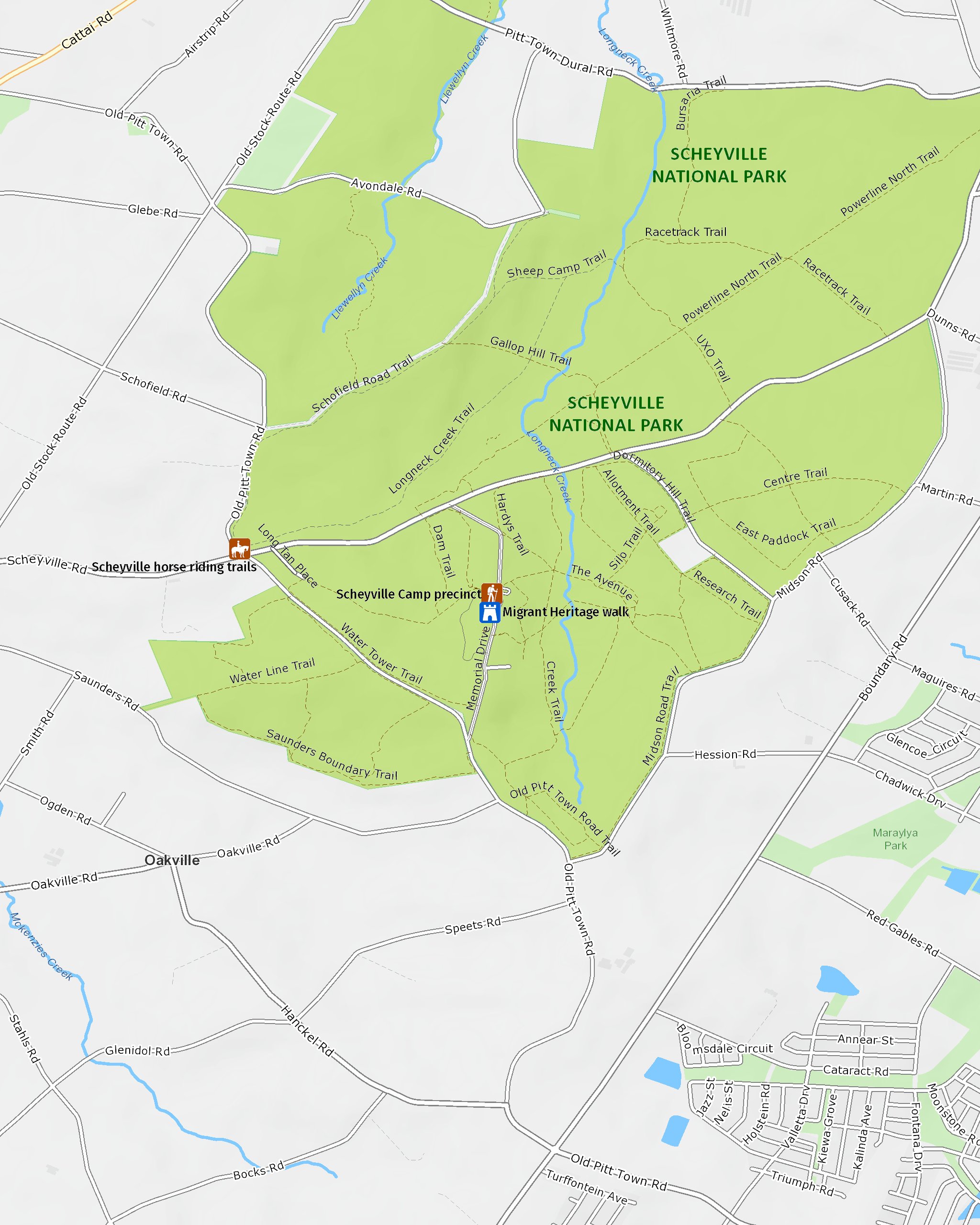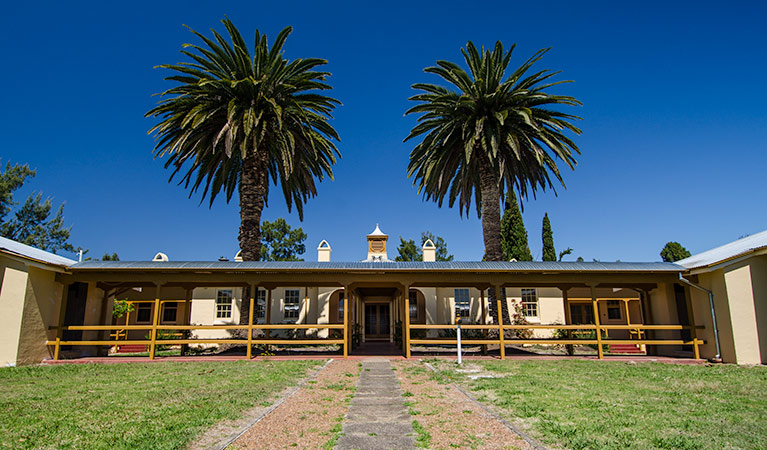Scheyville Camp precinct
Scheyville National Park
Overview
Take an easy walk around Scheyville Camp precinct in Scheyville National Park and explore the area's fascinating heritage. See restored buildings, remnants of structures long fallen, and uncover their unique history through interpretive signs.
- Type
- Historic buildings/places
- Accessibility
- Medium
- Opening times
- Scheyville Camp precinct opens at 8am and closes at 5pm (8pm during daylight savings).
- What to
bring - Hat, sunscreen
- Please note
- Remember to take your binoculars if you want to birdwatch.
Step back in time and explore the unique heritage of Scheyville Camp precinct in Scheyville National Park.
Throughout the 20th century, this site played host to many different people and projects. It was once a socialist labour settlement, then the Dreadnought Trust’s training scheme for young British men and a place where Australian city boys came to learn farming skills. Scheyville even functioned for a time as a military camp to train newly selected officer cadets. It later became the largest immigration hostel in Australia, a fascinating history which is detailed in the Migrant Heritage walk.
The site’s heritage is abundantly clear as you wander around old buildings and take in the interpretive signs. This is a particularly good stop for history buffs, school students, or people just looking to bookend a relaxing picnic with some light learning. Expect to find several easy walks around restored buildings from the 1920s or 50s, buildings in current restoration, or remnants of structures long since fallen.
Scheyville Camp precinct has a strong historical value, but also a strong emotional one. Residents came to the site during times of great change in their lives, as Dreadnought boys, post-World War II migrants, or National Service Officers during the Vietnam War. The site is a legacy to these people.
Map

Map legend

Local alerts
For the latest updates on fires, closures and other alerts in this area, see https://www.nationalparks.nsw.gov.au/things-to-do/historic-buildings-places/scheyville-camp-precinct/local-alerts
General enquiries
- National Parks Contact Centre
- 7am to 7pm daily
- 1300 072 757 (13000 PARKS) for the cost of a local call within Australia excluding mobiles
- parks.info@environment.nsw.gov.au
Park info
- in Scheyville National Park in the Sydney and surrounds region
Scheyville National Park is open 8am to 6pm from May to August and 8am to 8pm from September to April. The park may have to close at times due to poor weather or fire danger.
Visitor info
All the practical information you need to know about Scheyville Camp precinct.
Maps and downloads
Learn more
Scheyville Camp precinct is in Scheyville National Park. Here are just some of the reasons why this park is special:
Feathered migrants

The park sustains an impressive population of permanent and migratory birds, including several precious species like the vulnerable swift parrot and turquoise parrot, and the endangered regent honeyeater. Bring some comfortable shoes and a pair of binoculars to get the most out of this quiet landscape, which changes throughout the year as different species come and go.
- Longneck Lagoon walking track A small freshwater wetland, Longneck Lagoon walking track allows visitors to see the startling array of birds that frequent the area. Perfect for walking with children.
Putting down roots

Scheyville National Park protects a large area of the Cumberland Plain Woodland, an endangered ecological community. There’s also a small area of Casltlereagh scribbly gum woodland and shale transition forest. Strolling through Scheyville has much to interest naturalists – and animal enthusiasts, for that matter. The native thorn bush is an important understory habitat for birds. There are over 140 types of waterbirds, offering superb birdwatching opportunities. There are horse riding tracks and places for cycling. There is even an education centre focusing on plants and animals.
- Longneck Lagoon walking track A small freshwater wetland, Longneck Lagoon walking track allows visitors to see the startling array of birds that frequent the area. Perfect for walking with children.
The Australian story

Scheyville has a rich heritage that gives us a great insight into the past 175 years of Australian history. It has played host to a government cooperative farm and an agricultural training facility. In World War I, it was an internment camp, in World War II, a training base for the First Australian Parachute Battalion. It’s also been a migrant camp for new Australians and an officer’s training unit in the Vietnam War. Scheyville has seen it all. And its remarkable life continues too: around a quarter of a million Australians are linked to the Scheyville site through their ancestors. Because of this, Scheyville is recognised by the NSW State Heritage Register.
- Migrant Heritage walk Migrant Heritage walk offers an easy stroll around original structures from the post-WWII migrant camp of Scheyville, with interpretive panels detailing the site’s heritage.
- Scheyville Camp precinct Take an easy walk around Scheyville Camp precinct in Scheyville National Park and explore the area's fascinating heritage. See restored buildings, remnants of structures long fallen, and uncover their unique history through interpretive signs.
Plants and animals protected in this park
Animals
-
Cumberland Plain land snail (Meridolum corneovirens)
The endangered Cumberland Plain land snail is only found on the Cumberland Plain, west of Sydney. During drought it digs deep into the soil to escape harsh conditions. Its brown shell is thin and fragile.

